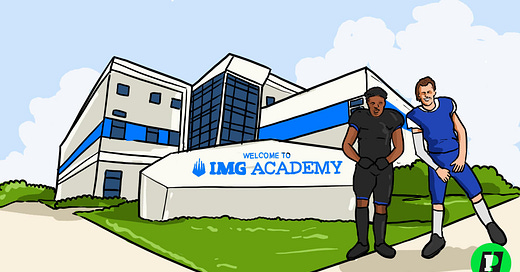The Prep School Effect: A Deep Dive into a Changing Youth Sports World
Landscape is shifting as IMG sold for $1.25B, education is being reshaped, & youth athletes can now make money.
Over 50+ athlete investors were named in IMG Academy last week.
Jason Kelce
Dak Prescott
Michelle Wie
Justin Jefferson
This comes a few months after Hong Kong private equity firm BPEA EQT acquired IMG in…




